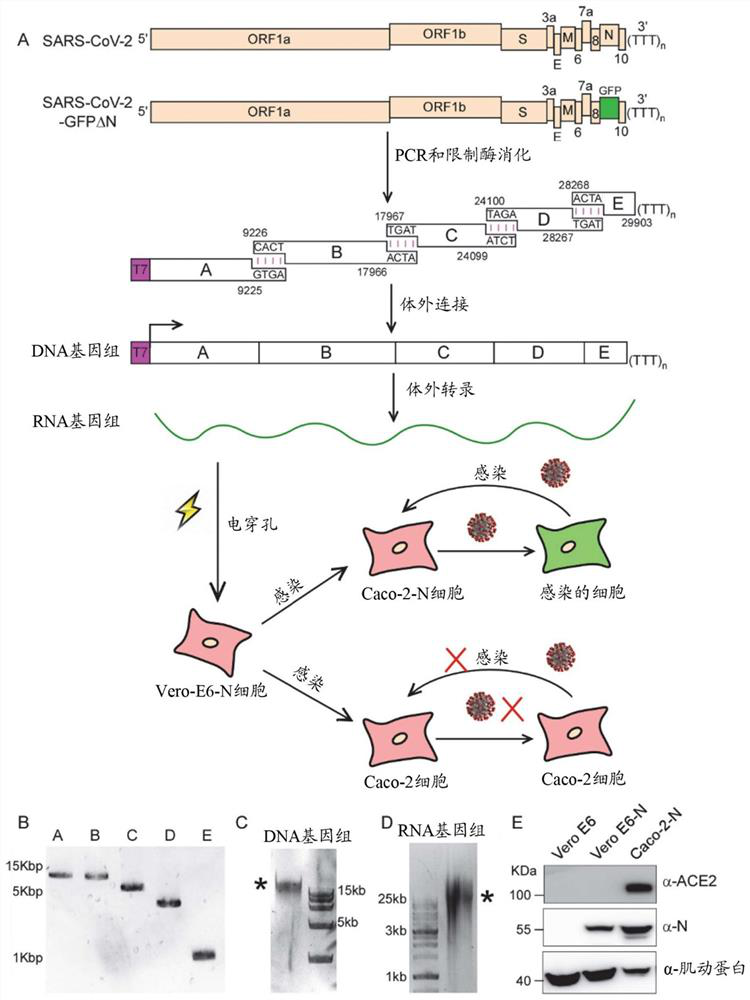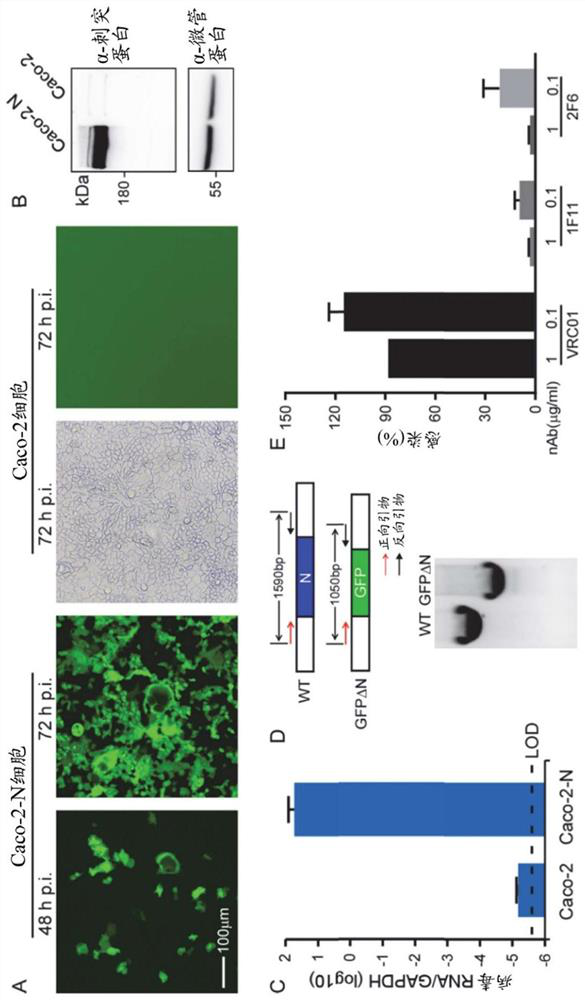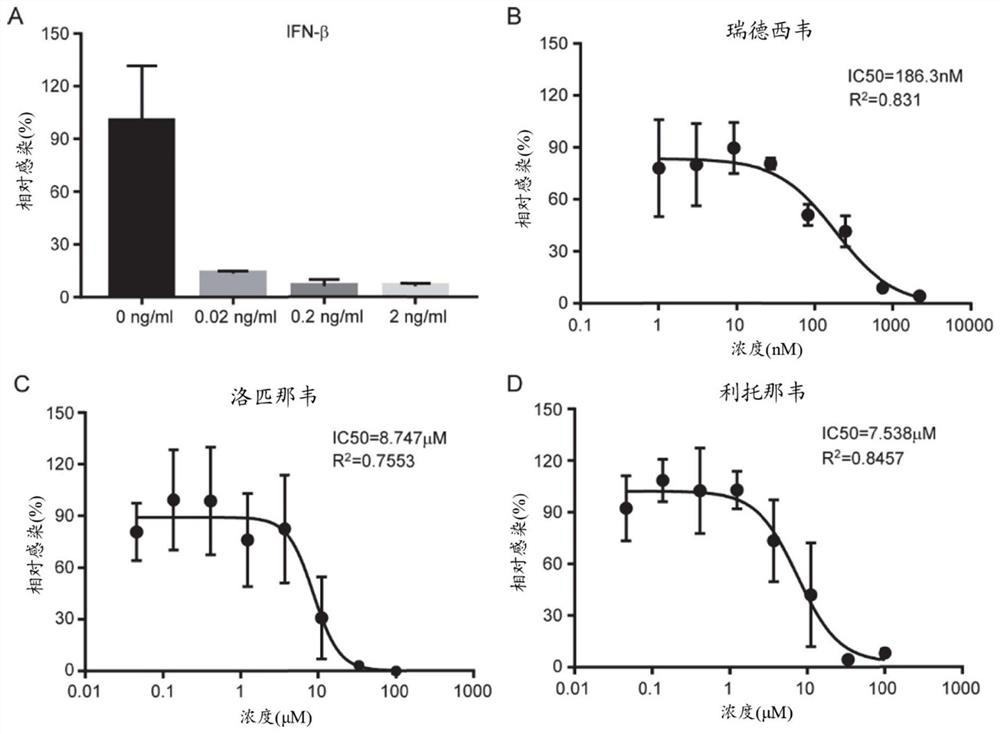Viral structural protein genetic complement based coronavirus cell model
A coronavirus and structural protein technology, applied in the field of biomedicine, can solve problems such as large genome fragments, inability to accommodate plasmids, and unstable clones
- Summary
- Abstract
- Description
- Claims
- Application Information
AI Technical Summary
Problems solved by technology
Method used
Image
Examples
Embodiment 1
[0051] The following describes exemplary embodiments of the present invention by taking the Wuhan-Hu-1 strain (MN908947) of the SARS-CoV-2 virus in the NCBI database as an example.
[0052] (1) In vitro amplification of viral genome fragments and in vitro splicing
[0053] The virus-encoding N gene was completely deleted and replaced with cDNA encoding GFP. At the same time, a T7 promoter sequence was placed upstream of the 5'UTR of the virus for in vitro transcription to initiate viral genome transcription. The entire viral genome is 29k long, divided into five segments A, B, C, D, and E, which were chemically synthesized by GenScript Biotechnology Company and cloned into the pCC1 vector ( figure 1 A, the sequence of fragments A-E is shown in SEQ ID NO: 1-5), wherein the gene encoding N protein in fragment E is replaced by the gene encoding GFP. Using the pCC1 vector cloned with fragments A-E as templates, use the following primers for PCR amplification and introduce IIS ty...
Embodiment 2
[0108] Experiments in which a cell line overexpressing the N protein of SARS-CoV was used to generate a recombinant SARS-CoV-2 virion whose genome lacked the gene encoding its own N protein.
[0109] This example shows the construction of a Caco-2 cell line that stably expresses the N protein of SARS-CoV (the sequence information is derived from the SARS-CoV Urbani strain, gene ID: MK062182.1), named Caco-2-N (SARS1 ). This cell line can also be used to support the packaging of SARS-CoV-2GFP virus whose genome lacks the N gene, suggesting that the function of the N protein in SARS-related viruses is very conserved. It also suggests that the scheme of Example 1 also has applicability in SARS-CoV virus.
[0110] (1) Construction of lentiviral expression vector expressing SARS-CoV N protein
[0111] The SARS-CoV virus N gene connected with the coding sequence of the FLAG tag was cloned into the lentiviral vector pLVX-IRES-mCherry, which was named pLVX-SARS-CoV N-IRES-mCherry. ...
Embodiment 3
[0115] Embodiment 3: drug evaluation experiment
[0116] This SARS-CoV-2 cell culture model can be used for rapid and efficient evaluation of antiviral regimens. This example evaluates the inhibitory effects of type I interferon IFN-β, remdesivir, ritonavir and lopinavir on viruses.
[0117] (1) Antiviral drugs:
[0118] The antiviral drugs selected in this example are type I interferon IFN-β (Sino Bioligical, 10704-HNAS-5); remdesivir (MedChemexpress, HY-104077); lopinavir (biochempartner, BCP01395) and Tonavir (biochempartner, BCP03777).
[0119] (2) Antiviral drug effect evaluation experiment:
[0120] Antiviral effect experiment of type I interferon IFN-β: the day before the experiment, Caco-2-N cells were mixed with 5×10 cells per well. 4 Cells were plated in 24-well culture plates containing DMEM medium. The next day, discard the culture medium in the 24-well culture plate, and dilute IFN-β with DMEM culture medium to image 3 The corresponding concentrations shown...
PUM
 Login to View More
Login to View More Abstract
Description
Claims
Application Information
 Login to View More
Login to View More - R&D
- Intellectual Property
- Life Sciences
- Materials
- Tech Scout
- Unparalleled Data Quality
- Higher Quality Content
- 60% Fewer Hallucinations
Browse by: Latest US Patents, China's latest patents, Technical Efficacy Thesaurus, Application Domain, Technology Topic, Popular Technical Reports.
© 2025 PatSnap. All rights reserved.Legal|Privacy policy|Modern Slavery Act Transparency Statement|Sitemap|About US| Contact US: help@patsnap.com



